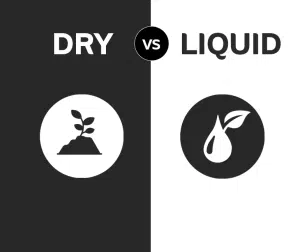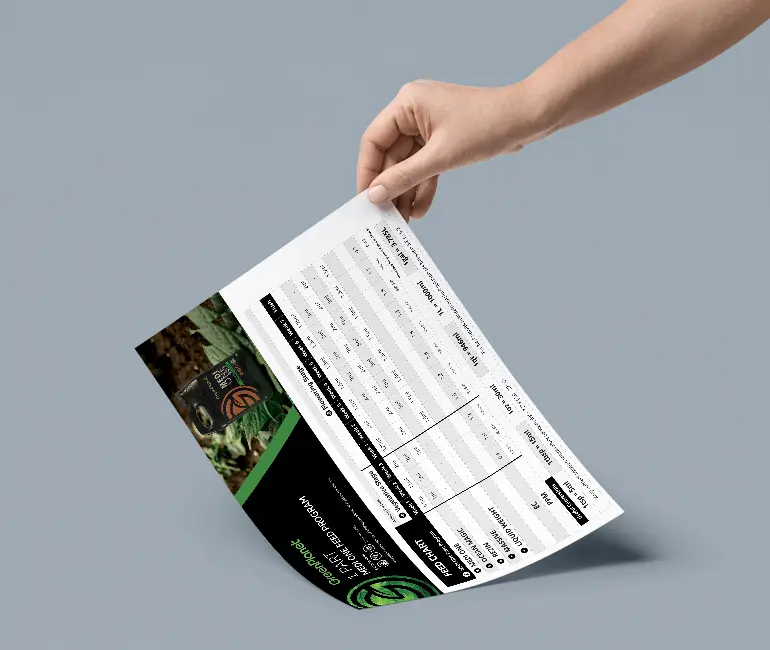
Inventory Count: Thursday, April 24th – Friday, April 25th. Resuming normal operations on Monday, April 28th. To avoid delays, check the order cutoff date: More Details
Recent Posts




Upcoming Events
Latest Comments


Dedicating your garden to a complete and well-rounded feeding program is a great way to ensure that your harvest is a cut above the rest. Not only do feeding programs contain the essentials for plant health and nutrition, but they also include supplements that can elevate your product to levels of unforgettable quality. Whether you’re new to gardening or have been growing for decades, experts would agree that committing to a program that promises to produce a heavy, quality-driven harvest, is a good place to start. In hopes of guiding gardeners to possibly the most quality-focused feeding program on the market, the following passages will dive deeper into the organic feeding program of Medi One.
A feed program is a schedule of plant nutrition that can be mapped in terms of fertilizer dose, ratio, supplementation and use overtime. Usually containing several bottles, a complete feeding program should contain supplements including a base nutrient fertilizer, a vitamin supplement, a bloom booster, a source of carbohydrates and a trichome enhancer. By combining the inputs in a feeding program, prompted with other factors that produce a confident yield, growers can expect their garden to produce the most quality driven harvest possible. To browse a complete list of feed programs available at GreenPlanet Nutrients, click here.
Medi One is perhaps the easiest to use organic base nutrient on the market. Accompanied with a cornucopia of supplements like Ocean Magic, Vitathrive, Massive and Rezin, the 1 Part Medi One Feed Program is sure to impress. Perfect for indoor or outdoor soil/soilless gardens, Medi One is the choice pick for growers who want to produce a clean harvest, free of any harsh or insoluble chemicals. Before committing your garden to the Medi One Feed Program, consult a description of each supplement included in the schedule below.
Medi One is an OMRI-listed, one-part, organic base nutrient. Composed from multiple organic sources, including hydrolyzed, slow-steamed Great Lakes fish scraps and naturally sourced potassium sulphate, Medi One boasts an impressive yet balanced N-P-K ratio of 4-3-3 and, because of the slow steaming of inert ingredients during the manufacturing process, Medi One is an overflowing reservoir of essential micronutrients like copper, boron, manganese and zinc. Additionally, unlike other organic fertilizers, which are usually manufactured and sold in powdered or soluble form, Medi One’s liquid form offers plants instant nutrient availability.
Ocean Magic is a vegetative and flowering additive derived from cold-pressed Atlantic Sea Kelp that delivers a variety of benefits to your plants. The wealth of ingredients found in Ocean Magic supports a number of functional properties such as rooting and the reduction of environmental and plant stress. Used as either a root-soak or foliar spray, Ocean Magic contains special plant hormones including auxins, cytokinins and gibberellins, which have been linked to promoting vigorous growth, branching, and increased resistance to stress in plants (Stirk & Staden, 2014, p. 127).
Massive Bloom Formulation is our premier flowering additive formulated with all of the necessary macro and microelements required to achieve an increase in flower size. As well as providing several additional beneficial properties, such as L-amino acids and a source of carbohydrates, Massive is the perfect blooming supplement to pair with the living, organic qualities of Medi One.
Rezin is our flowering additive formulated to enhance the natural processes within flowering plants that produce flavour and aroma. With no PPM, Rezin can be used with any base nutrient program until harvest to produce large, sugar-coated flowers. Now known for enhancing the “entourage effect” (Russo, 2019, para. 17), Rezin is one proprietary supplement that is a must-have for any quality-driven garden.
Entourage Effect: The theory that the synergistic effect of THC, flavonoids, cannabinoids and terpenes all contribute to the overall “experience” of cannabis consumption.
Liquid Weight is a supplement blend of simple carbohydrates that support beneficial microbial life in the root zone. This leads to an increase in the absorption of essential nutrients that help develop impressive aromatic flowers and fruits. Plants spend an amazing amount of energy-releasing sugars like cellulose into the root-zone; so, by supplementing your plant’s expenditures with additional carbs, you can be sure the beneficial microbes in your soil will be plentifully fed, which in turn will support the cultivation and growth of your living medium. Want to know more about carbohydrate supplements? Read our blog: The Power of Carbohydrates in the Garden.
Like a recipe, the Medi One Feed Program delivers the best results when the formula is followed. As explained above, a feeding program is a schedule of plant nutrition that can be mapped in terms of fertilizer dosage, ratio, supplementation and use overtime. Throughout the weeks of vegetative and flowering growth, the Medi One Feed Program will guide the grower through different stages of a plant’s life, and offer general feeding ratios, doses and helpfully supplementation tips overtime. All the measurements of plant food on our feeding programs are described in millilitres of fertilizers per litre of water.
At a glance, you’ll notice a few distinguishing features about the Medi One Feeding Program: first, only certain products and supplements are recommended for use in specific stages of plant growth. For example, the feed chart is split into two stages: vegetative and flowering growth. In these different stages, only certain supplements are recommended for use; for instance, you’ll notice that products that increase flower size, like Massive Bloom Formulation, are only introduced in the second week of flower, once plants have established pistils and bud sites.

Another aspect of the feeding chart to examine is the rise and gradual plateau of the recommended Parts Per Million (PPM) of your nutrient solution. PPM is a unit of measurement which describes the concentration of a solution. In this case, since we are examining fertilizer, PPM can be seen as a measurement that determines the strength and concentration of dissolved elements within a nutrient solution. While following the Medi One Feed Program, you’ll notice that the PPM of your nutrient solution will gradually increase as you move into the flowering stage, finally plateauing in weeks 2 – 6, followed by a gradual decrease in strength as you move towards the final weeks of the flushing period. These general measurements are based on the assumption that as time progresses, your plants will become larger, and will therefore be able to digest a more concentrated nutrient solution.

There’s no better time than now to start your garden off right with the help of the Medi One nutrient schedule. Want to learn more about Medi One? Read our previous blog: Medi One’s Role in an Organic Garden. For all other inquiries, contact a member of the GreenPlanet sales team, or your local garden supply store for product information and purchasing inquiries.
GP NUTRIENTS
COMPANY
CONSUMER
OUR WORLD
CONNECT
NEWSLETTER
usinfo@mygreenplanet.com
+1-866-913-4769
Monday: 8am – 4:30pm
Tuesday: 8am – 4:30pm
Wednesday: 8am – 4:30pm
Thursday: 8am – 4:30pm
Friday: 8am – 4:30pm
Saturday: Closed
Sunday: Closed
Week of Dec 18-22- Regular operating hours
Dec 25- Closed (Stat Holiday)
Dec 26- Closed (Non-Stat day off with pay)
Dec 27-29- Regular operating hours
Jan 1- Closed (Stat Holiday)
Jan 2-5- Regular operating hours
Recent Comments